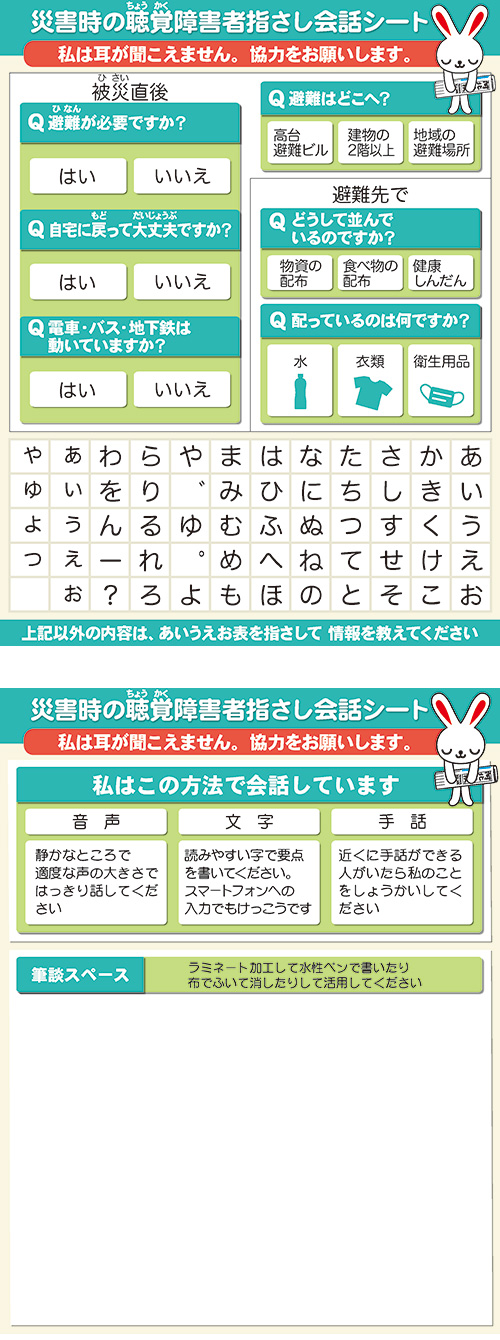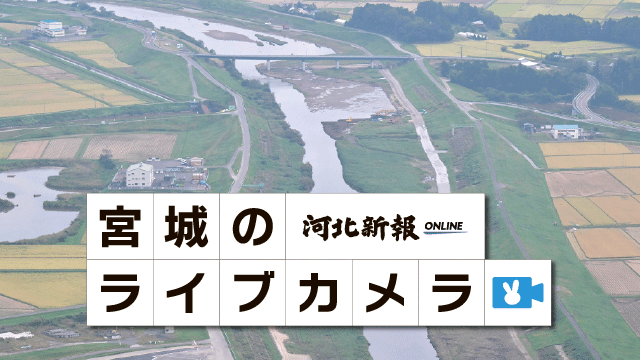Part 7: Assistance (1) People with Disabilities / Large Handicaps during Evacuation Procedures




In the Great East Japan Earthquake, many seniors and those with disabilities, who had trouble evacuating on their own, lost their lives. Also striking was the death toll of those who tried to assist people vulnerable to disasters, such as neighborhood association officers, welfare commissioners, and volunteer fire corps members. We examine the problems associated with evacuation and support of those who need assistance, together with testimonials on the day of the disaster. (“Preserve Lives and Communities” Investigation Team)
◎Manpower and evacuation guidance crucial
Those with disabilities must deal with a handicap not only in their daily lives, but also during disaster evacuation procedures. When the tsunami approached, the difference between life and death was paper-thin, as in the case of the Abe family.
It was right after a visiting care staff had bathed Hiroki Abe (23), when a sudden, violent jolt shook the house. Yumiko Abe (53), a housewife from Matsunami, Ishinomaki City, rushed to check on her second son, Hiroki, with a staff member.
Hiroki has a heavy disability that keeps him confined to bed. He cannot move on his own, and it is difficult for him to communicate through normal means. He needs assistance in all aspects of his daily life, including eating his meals. Yumiko threw herself over Hiroki, trying to shield him from falling objects.
About 10 minutes after the shaking stopped, her husband came rushing back from his workplace downtown, face pale with fear.
“It’s a Tsunami. Run!”
Her husband and the bathing service staff carried Hiroki into the car. Yumiko loaded the equipment necessary for Hiroki’s everyday life: nutritional supplements, aspirator, wheelchair, and blankets.
Their home was 500 meters away from the coastline. As soon as they began to drive in the opposite direction from the ocean, muddy water came rushing in from both sides of the road. The family was able to drive into a parking lot on a supermarket rooftop without encountering traffic. Everything around them was swallowed by the incoming wave, and they heard cries from the torrents of muddy water: “Help me!”
During a disaster, it would take the combined efforts of more than three people to move Hiroki to safety. However, it was common for Yumiko and Hiroki to be alone in the house.
What if her husband had returned home a minute later? What if the bathing staff had not been present? What if there had been traffic? Whenever she looked back on that day, Yumiko became uneasy.
Seiji Watanabe (72) and Masako Watanabe (68) are from Yuriage, Natori City. The couple was in their home, located one kilometer from the coastline, when the earthquake struck. Both Seiji and Masako are deaf. Shards of fluorescent light bulbs and dishes fell from the shaking and scattered about the floor. The couple attempted to turn the television on, but to no avail; there had been a blackout. There was no reception on their cell phone, which they relied on heavily for communication via text messaging. With no means to gather information, they began cleaning up the house for the time being.
Meanwhile, the surrounding neighborhood was chaotic with escaping residents. Volunteer fire corps and firefighters drove by their house, calling for residents to evacuate. Neither the calls for evacuation nor the chaos outside reached the couple.
After 3:30 p.m., their older brother Toshimasa (76) rushed to the couple’s home, concerned for their safety. By that time, there were no signs of people left in the neighborhood. Hearing a roaring sound, Toshimasa rushed into the house, found the couple, and signaled to them frantically. “A tsunami is coming ”.
By the time the three of them left the house, a black wall of water was approaching the residential area only 500 meters ahead. They jumped into Toshimasa’s car and hurried inland, chased by the tsunami. As they arrived at the Sendai Tobu Road, a major arterial road in the area, they saw people and cars being swallowed and washed away by the tsunami.
“The hearing-impaired have no trouble moving, so we should have evacuated as soon as we felt the earthquake,” Seiji reflects regretfully.
According to an investigation by the Cabinet Office, there were 1702 casualties of people with disabilities in the Great East Japan Earthquake. Their death rate was 1.47%, a figure twice as large as the overall death rate of civilians, 0.75%
◎Victims reveal the reality of their experiences / Sharing evacuation problems with the community
Those with disabilities who experienced the Great East Japan Earthquake have begun sharing the problems they faced during evacuation with the community. Efforts are being made to use these lessons as a starting point to improve evacuation assistance during disasters.
The Japan Federation of the Blind is made up of various organizations that support the visually impaired. This year, they founded the “Kataribe Project (Storytellers Project).”
The storytellers are those who are visually impaired from Iwate, Miyagi, and Fukushima Prefectures. While passing on lessons from the earthquake, the project aims to spread understanding on the importance of helping those with disabilities to gather information and evacuate after a disaster. 18 members from the three prefectures are currently registered in the project.
The first “Kataribe” storytelling event was held on May 24 in Kamaishi City. Ryo Nakamura (59), a Kamaishi resident, recounted his experience to 90 first-year students of Hanamaki City Nanjo Junior High School.
Nakamura has total blindness, and after the shaking stopped that day, he decided that it would be too difficult to escape to an evacuation shelter by himself. He waited for his younger sister, who lived with him, to return home. A worried neighbor visited his home just in time to guide him to safety, and they escaped to higher ground as the tsunami approached.
“I want people to keep in mind that there are people who have trouble evacuating on their own,” he stressed.
There are plans to hold more of these storytelling events in the future, in places like Akita City and Nagoya City. Kiyotaka Oikawa (60) from Oshu City, director of the Japan Federation of the Blind Tohoku branch, states, “Persons with disabilities must be actively engaged in keeping their experiences and lessons fresh in everybody’s minds. Through our work, we hope to inform all of society about these problems surrounding evacuation procedures.”
There are efforts to help those with disabilities protect themselves in the event of a disaster. The “Miyagi Disaster Support Center for the Deaf” is made up of five organizations in the prefecture, including the Miyagi Prefecture Association for the Deaf. Later this year, they will begin programs targeting those who have auditory impairments, aiming to improve their disaster preparedness through consultations and lectures.
After the disaster, those with hearing disabilities voiced their concerns to the support center. “I was anxious because I could not get any information via the emergency radio broadcast.” “It was difficult not being able to communicate with those around me.”
During the consultation meetings, participants will confirm the location of local evacuation centers and review basic evacuation procedures, such as running to higher ground or inland areas when they feel an earthquake near the coast. They will be given the opportunity to sign up for an e-mail service by neighborhood organizations, distributing disaster information broadcast on the emergency radio. In addition, participants can learn about evacuation support plans for those requiring assistance.
Masatoshi Koizumi (63), president of the Miyagi Prefecture Association for the Deaf, states, “There were many people who were unable to evacuate in a timely manner because they did not have information about the disaster, or were confused about what to do. It is important for those with disabilities to apply what they learned from the disaster, and prepare themselves for the future.”
Translated by M. Seki
June 18, 2013 (Tues.)
[Japanese] http://www.kahoku.co.jp/special/spe1114/20130618_01.html
 朝刊・夕刊
朝刊・夕刊 記事を探す
記事を探す FAQ
FAQ















